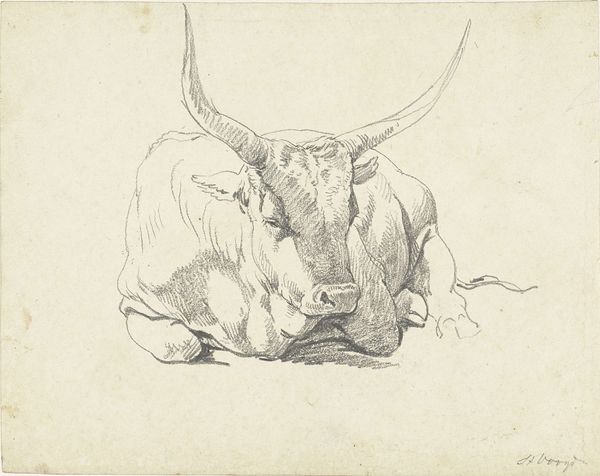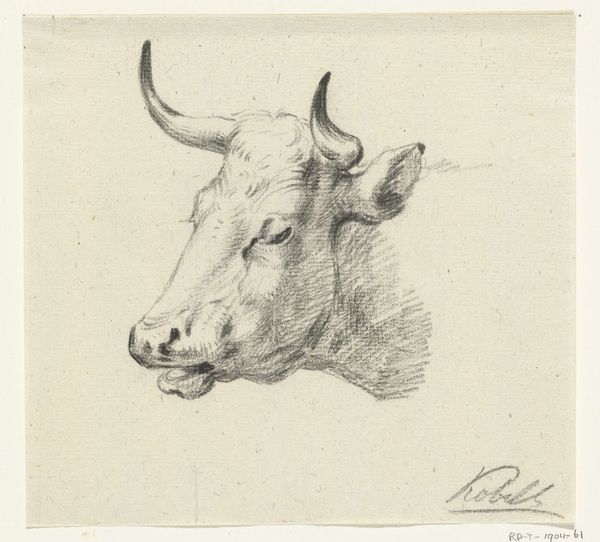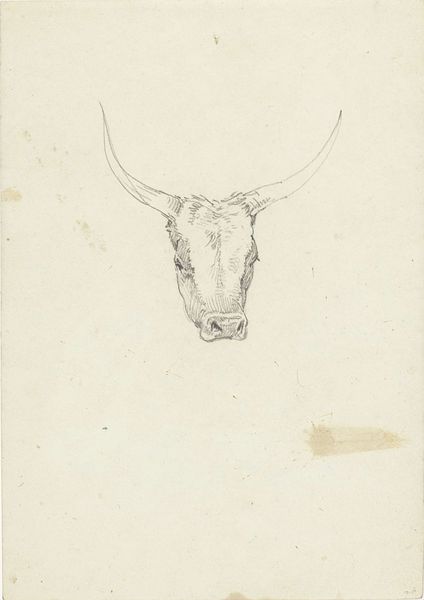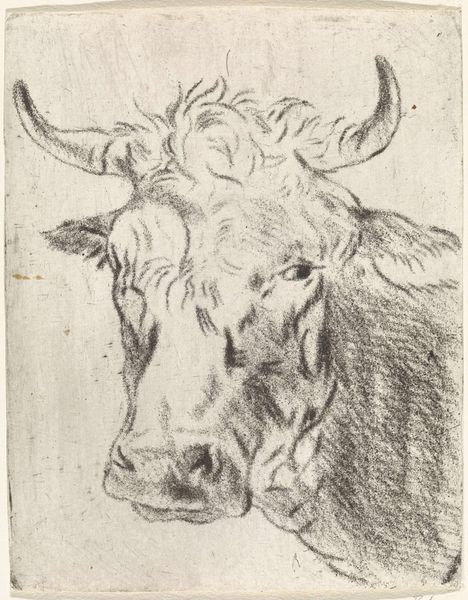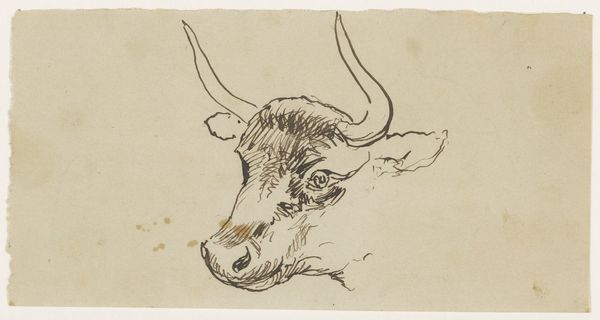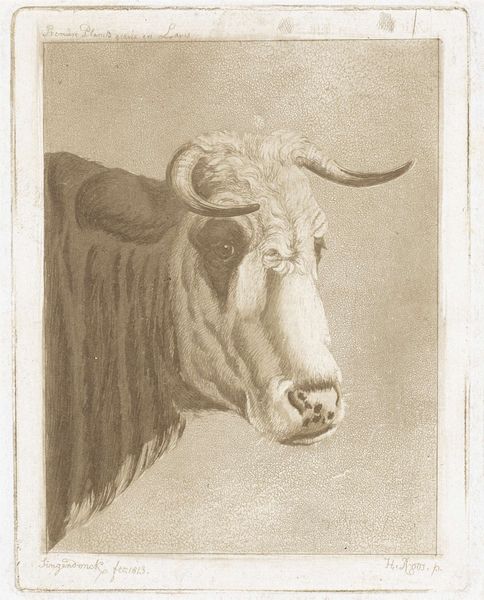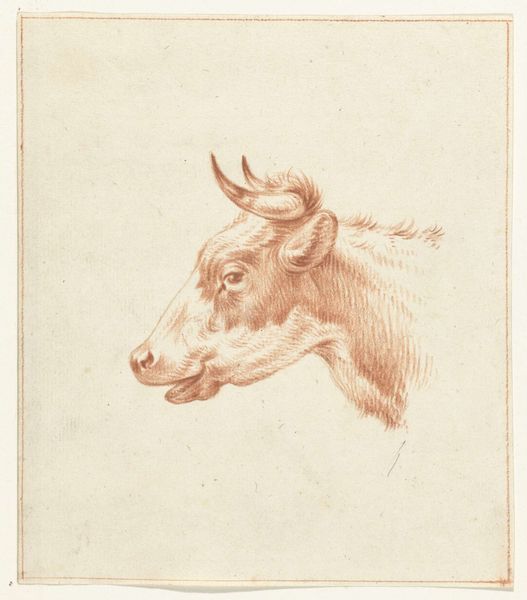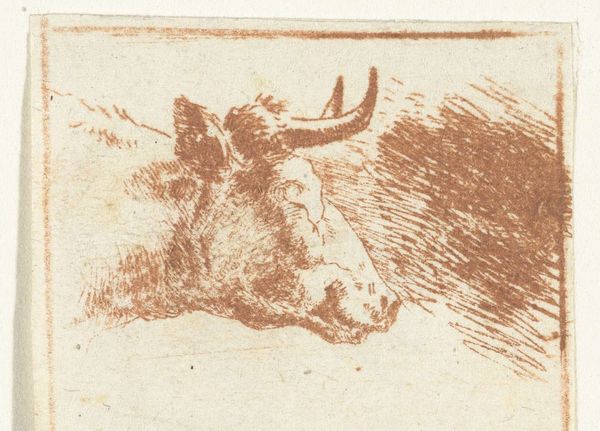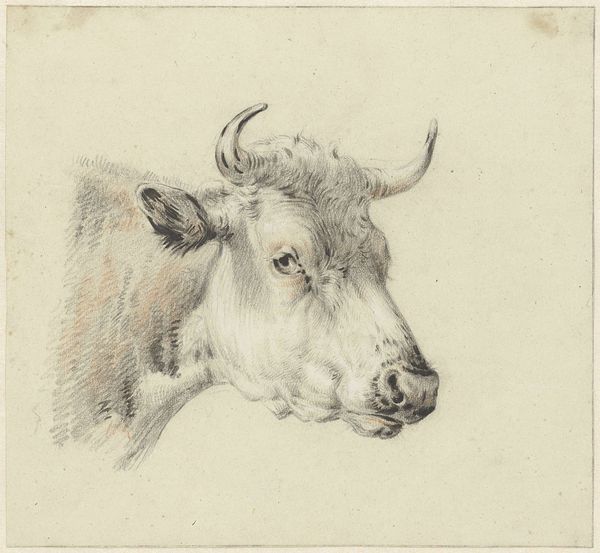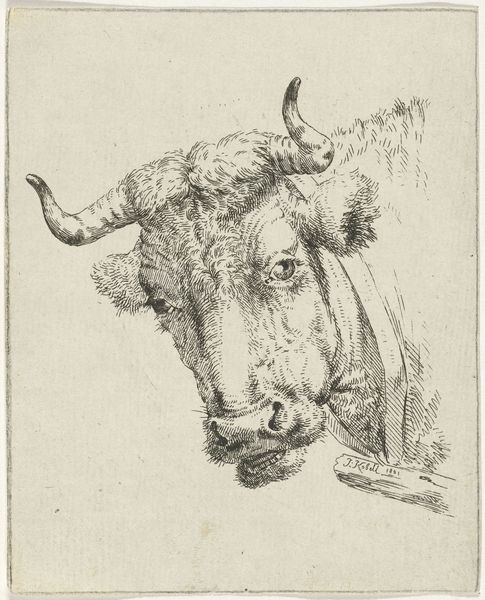
drawing, pencil
#
portrait
#
drawing
#
pencil sketch
#
pencil
#
realism
Dimensions: height 253 mm, width 212 mm
Copyright: Rijks Museum: Open Domain
Curator: Hendrik Voogd, between 1788 and 1839, gave us this intimate glimpse into nature. It's titled "Runderkop, naar links," meaning "Head of Cattle, facing left." Executed in pencil, it resides at the Rijksmuseum. Editor: It looks almost…prehistoric. The soft shading makes its bulk feel immense, grounded. Yet, those horns point skyward, like fragile antennae. I wonder what kind of landscape he imagined this beast in. Curator: Landscapes were, indeed, Voogd's specialization. He often turned to the Italian countryside for inspiration, framing cattle within broader themes of rural life, economy, and even emerging romantic notions of the sublime. Think about what this depiction, stripped down as it is, communicates about agrarian society at that time. Editor: So, is this a romantic ode to simple farm life, or an observation of raw animal power? Those eyes look tired, wise, perhaps a little burdened, a far cry from any glorified pastorals! Curator: The historical moment is vital. The rise of capitalism transformed rural landscapes. Agriculture increasingly commodified natural resources, creating tension and displacement. This sketch can reflect both the beauty celebrated and the inherent stress of a changing social order. What about the materials speaks to you? Editor: The bareness of the pencil—it’s so direct. Almost violent in its simplicity, actually, cutting through the noise. This medium lays the soul bare. It is not only observing cattle but life being stripped to the bone itself, as the earth often does to beings both human and animal. Curator: Voogd clearly chose the medium for this drawing, not only due to its easy handling for studies from nature, but perhaps with a conceptual motive as well, to symbolize bare existence or essential form. I find this is so important as a way of considering this portrait in our modern-day. Editor: Precisely. To really get close to art like this means acknowledging both history and today. A dialogue! Well, I've been given new ways to think about Voogd and pastoral subjects. Curator: I agree; art history is at its best as a living conversation between us and the artwork that asks vital questions about culture, nature and the role of art in shaping perceptions.
Comments
No comments
Be the first to comment and join the conversation on the ultimate creative platform.
